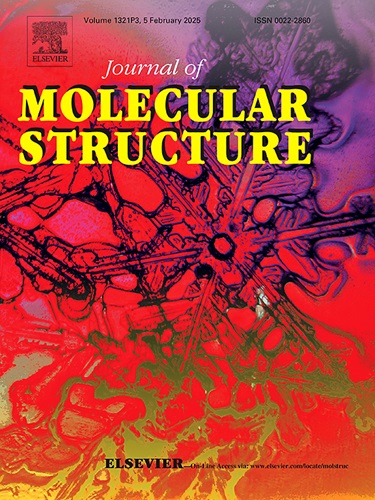Novel CoTeO3@β-C3N4 nanohybrids for removing pharmaceutical contaminants from natural water samples
IF 4
2区 化学
Q2 CHEMISTRY, PHYSICAL
引用次数: 0
Abstract
The whole environment is at risk due to the modern lifestyle in which antibiotic manufacturing and consumption are cornerstones. Vast amounts of pharmaceuticals from industrial effluents and urban wastewater make their way into natural water without sufficient treatment. Here, β-carbon nitride (β-C3N4) was made via thermal treatment of guanidine hydrochloride in an oxygen-poor environment. CoTeO3 at 10 % and 20 % doping ratios were incorporated on the β-C3N4, making 10 %CoTeO3@β-C3N4 (10-CoTe/β) and 20 %CoTeO3@β-C3N4 (20-CoTe/β). Ciprofloxacin (CPF) was utilized for examining the β-C3N4, 10-CoTe/β, and 20-CoTe/β sorption capabilities. A weakly acidic medium (pH= 6) was suitable for β-C3N4, 10-CoTe/β, and 20-CoTe/β, which showed qt values of 28.95, 63.59, and 93.22 mg g-1, respectively. The pseudo-second-order was the best-fitted rate-order model for CPF sorption onto 10-CoTe/β and 20-CoTe/β. The intraparticle diffusion mechanism derived the CPF sorption on 10-CoTe/β and 20-CoTe/β. For 10-CoTe/β. The CPF sorption onto 10-CoTe/β followed the Langmuir model, was exothermic, and spontaneous in cold effluents; however, 20-CoTe/β showed the utterly opposite outcome. The 20-CoTe/β was employed to treat groundwater (G-W) and seawater (S-W) spiked with CPF (5 mg l-1), where it showed 98.13 % and 99.73 %, respectively. The reusability of 20-CoTe/β was assessed over four successive cycles at 30 min equilibrium time, and the efficiency at the fourth cycle dropped only by 6.0 % compared to the virgin 20-CoTe/β, indicating remarkable and fast performance.

新型CoTeO3@β-C3N4纳米杂化物用于去除天然水样中的药物污染物
由于抗生素的生产和消费是现代生活方式的基石,整个环境都处于危险之中。工业废水和城市废水中的大量药物未经充分处理就进入了天然水。在贫氧环境下,对盐酸胍进行热处理制备β-氮化碳(β-C3N4)。以10%和20%的掺杂比例将CoTeO3掺入到β- c3n4上,得到10% CoTeO3@β- c3n4 (10- cote /β)和20% CoTeO3@β- c3n4 (20- cote /β)。采用环丙沙星(CPF)检测β- c3n4、10-CoTe/β和20-CoTe/β的吸附能力。β- c3n4、10-CoTe/β和20-CoTe/β的qt值分别为28.95、63.59和93.22 mg g-1,适宜于pH= 6的弱酸性培养基。拟二阶是最适合CPF吸附在10-CoTe/β和20-CoTe/β上的速率阶模型。CPF吸附在10-CoTe/β和20-CoTe/β上的扩散机制。10-CoTe /β。CPF对10-CoTe/β的吸附符合Langmuir模型,是放热的,在冷废水中是自发的;然而,20-CoTe/β显示完全相反的结果。用20-CoTe/β处理含CPF (5 mg l-1)的地下水(G-W)和海水(S-W),回收率分别为98.13%和99.73%。在平衡时间为30 min的连续4次循环中,对20-CoTe/β的可重复使用性进行了评估,第4次循环的效率仅比初处理的20-CoTe/β下降了6.0%,表明其性能显著且快速。
本文章由计算机程序翻译,如有差异,请以英文原文为准。
求助全文
约1分钟内获得全文
求助全文
来源期刊

Journal of Molecular Structure
化学-物理化学
CiteScore
7.10
自引率
15.80%
发文量
2384
审稿时长
45 days
期刊介绍:
The Journal of Molecular Structure is dedicated to the publication of full-length articles and review papers, providing important new structural information on all types of chemical species including:
• Stable and unstable molecules in all types of environments (vapour, molecular beam, liquid, solution, liquid crystal, solid state, matrix-isolated, surface-absorbed etc.)
• Chemical intermediates
• Molecules in excited states
• Biological molecules
• Polymers.
The methods used may include any combination of spectroscopic and non-spectroscopic techniques, for example:
• Infrared spectroscopy (mid, far, near)
• Raman spectroscopy and non-linear Raman methods (CARS, etc.)
• Electronic absorption spectroscopy
• Optical rotatory dispersion and circular dichroism
• Fluorescence and phosphorescence techniques
• Electron spectroscopies (PES, XPS), EXAFS, etc.
• Microwave spectroscopy
• Electron diffraction
• NMR and ESR spectroscopies
• Mössbauer spectroscopy
• X-ray crystallography
• Charge Density Analyses
• Computational Studies (supplementing experimental methods)
We encourage publications combining theoretical and experimental approaches. The structural insights gained by the studies should be correlated with the properties, activity and/ or reactivity of the molecule under investigation and the relevance of this molecule and its implications should be discussed.
 求助内容:
求助内容: 应助结果提醒方式:
应助结果提醒方式:


